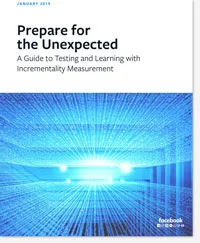

Maximise the benefits of incrementality through testing and learning
Learn how companies can prepare for and learn from common testing problems, while continuing to grow their businesses.
Measuring incrementality is increasingly vital to any business. Every company wants assurance that it is spending its marketing budget wisely, and measuring the incremental impact of every penny requires sound experimentation.
It's natural to hope that all experiments will go smoothly, but the unexpected can occur. While unforeseen testing problems may seem detrimental, they also offer opportunities for marketers to learn.
Marketers can prepare by anticipating the specific kinds of errors or difficulties that may occur when conducting incrementality testing – and having a plan of action for problems that are likely to arise.
“
Companies should reward responsible learning. It's important to know what could go wrong because things will go wrong. Especially when you are starting – at least 50% of the time things will go wrong.
–Alok Gupta, Director of Data Science, Lyft
Making mistakes is part of the process, and actually necessary for companies to make progress. The adoption of incrementality should encompass a change in mindset and culture to embrace responsible learning. This includes managing expectations, that things can, and eventually will, go wrong during an experiment, but that when they do, it is OK because you are learning along the way. In fact, many errors are fairly commonplace and predictable – and there are proven tactics that can be employed to give the best response and salvage as much valuable learning as possible.
In Prepare for the unexpected: A guide to testing and learning with incrementality measurement, you will learn about six common things that could go wrong during a test, and what to do in each scenario. Download the full guide to learn more and get started making experimentation a core part of how your organisation operates.

Prepare for the unexpected: A guide to testing and learning with incrementality measurement
Download the white paper






